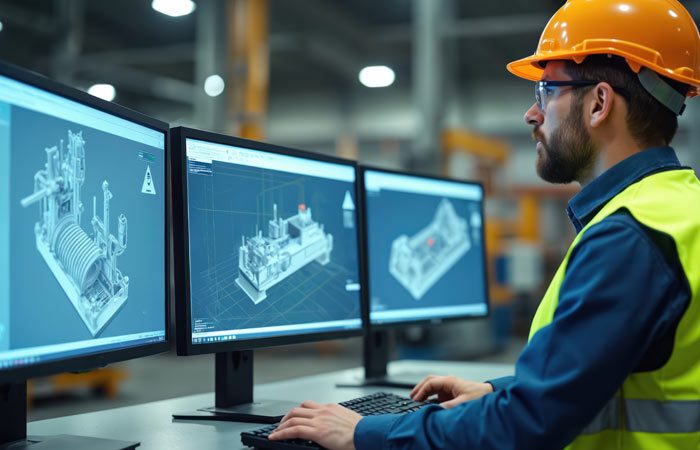
Redefining Flight: The Rise of Sustainable Aircraft Interior Design
The aviation industry is undergoing a major transformation. While fuel efficiency and emission reduction have long dominated the sustainability conversation, there’s a new frontier catching attention—sustainable aircraft interior design. From eco-friendly cabin materials to digital twin technologies, aircraft interiors are being reimagined to meet both passenger expectations and environmental responsibilities.
Why Cabin Interiors Matter in the Sustainability Equation
Traditionally, cabin interiors have been overlooked in the carbon footprint discussion. But everything—from the materials used in seat cushions to the way airflow circulates—impacts an aircraft’s overall energy consumption and environmental load. With global regulatory pressure and consumer demand for greener travel growing, aircraft OEMs and airlines are now prioritizing lifecycle-optimized interior design.
Eco-Friendly Cabin Materials and the Push for Circularity
One of the core pillars of sustainable interiors is eco-friendly cabin materials. Leather, foam, and plastics are being replaced by natural fibers, plant-based textiles, and thermoplastics that are bio-based or recyclable. These materials not only reduce emissions during production but also support end-of-life recycling, enabling the development of recycled aircraft interiors.
A standout trend is the use of flax-based composites and recycled carbon fiber—lightweight, robust, and significantly less harmful to produce. Additionally, airlines are exploring algae-based foams and bamboo laminates for sidewalls and tray tables, merging durability with a lower ecological impact.
Lightweight, Eco-Friendly Seating: The Double Win
Aircraft seats are among the heaviest components inside a cabin. By transitioning to lightweight sustainable seating, manufacturers are achieving two goals: reducing weight and cutting emissions. A single kilogram reduction in seat weight can save hundreds of liters of fuel annually per aircraft.
Today’s lightweight, eco-friendly seating uses advanced foams, carbon fiber-reinforced plastics, and recycled aluminum alloys. These innovations contribute to low-carbon cabin solutions by minimizing the aircraft’s overall takeoff weight and enhancing fuel efficiency—without compromising passenger comfort.
Modular Aircraft Cabin Design: Built for Adaptability and Longevity
Flexibility is the new luxury in aircraft interiors. Modular aircraft cabin design enables airlines to easily reconfigure seating layouts, galley zones, or entertainment systems based on route demand, reducing the need for frequent retrofits or replacements.
This modularity not only extends the lifecycle of components—reducing waste and cost—but also simplifies the adoption of future innovations like wireless in-flight entertainment or touchless lavatories, keeping sustainability at the core of the cabin’s evolution.
Digital Cabin Interfaces and Passenger-Centric Sustainability
Beyond materials and structures, the cabin is also getting smarter. Digital cabin interfaces—like app-based seat controls, smart lighting systems, and AI-powered temperature regulation—allow airlines to reduce the hardware footprint while offering greater personalization.
These systems can adapt in real-time to passenger behavior and load factors, optimizing power usage and reducing overall energy draw during flight. Passengers benefit from a more intuitive, responsive environment while airlines enjoy operational efficiency.
The Science Behind the Flow: CFD Analysis for Cabin Airflow Efficiency
Airflow within the cabin plays a crucial role in passenger comfort, hygiene, and energy use. Engineers now rely on Computational Fluid Dynamics (CFD) analysis for cabin airflow efficiency, simulating various scenarios to fine-tune ventilation systems.
CFD helps optimize the placement of air nozzles, HEPA filters, and recirculation systems, ensuring air quality standards are met while minimizing energy expenditure. By leveraging this technology, airlines can design interiors that feel fresher, safer, and greener.
The Power of Predictive Modeling: Digital Twin for Sustainable Cabin Design
A game-changer in aerospace engineering is the use of the digital twin for sustainable cabin design. A digital twin is a real-time, virtual representation of a physical system—in this case, the aircraft interior. It enables designers and operators to monitor wear and tear, test different configurations, and forecast the environmental impact of upgrades.
By integrating digital twins into the design process, manufacturers can simulate long-term energy consumption, optimize material use, and validate maintenance strategies—all contributing to a more sustainable cabin lifecycle.
Eco-Material Selection and Testing: Data-Driven Decisions
No sustainability strategy is complete without rigorous eco-material selection and testing. Engineers are using advanced tools to assess the environmental impact of materials across their lifecycle—considering factors like carbon footprint, durability, flammability, and recyclability.
New tools are also enabling faster prototyping and simulation, helping manufacturers ensure that these green materials meet aviation’s uncompromising safety and regulatory standards without extensive trial-and-error.
TAAL Tech’s Engineering Expertise in Sustainable Interiors
Leading the charge in this space is TAAL Tech, an established engineering services company delivering cutting-edge solutions to global aerospace clients. Their expertise spans modular aircraft cabin design, lightweight sustainable seating, and CFD-based ventilation optimization. TAAL Tech combines domain know-how with advanced digital engineering tools—like digital twin for sustainable cabin solutions—to help OEMs and Tier 1 suppliers meet aggressive sustainability and performance targets. From concept to certification, their support across the design and testing value chain accelerates innovation while aligning with environmental mandates.
Looking Forward: Greener Skies, One Cabin at a Time
Sustainable aircraft interior design is more than a trend—it’s a critical part of aviation’s journey to net zero. As innovations continue to emerge in eco-friendly cabin materials, recycled aircraft interiors, and low-carbon cabin solutions, stakeholders across the ecosystem must collaborate to scale adoption.
Ultimately, every bolt, fabric, and digital system within the cabin is now part of the larger sustainability story. With a data-driven, human-centered approach, the future of flight will not only be more efficient—it will be more conscious, comfortable, and environmentally accountable.


